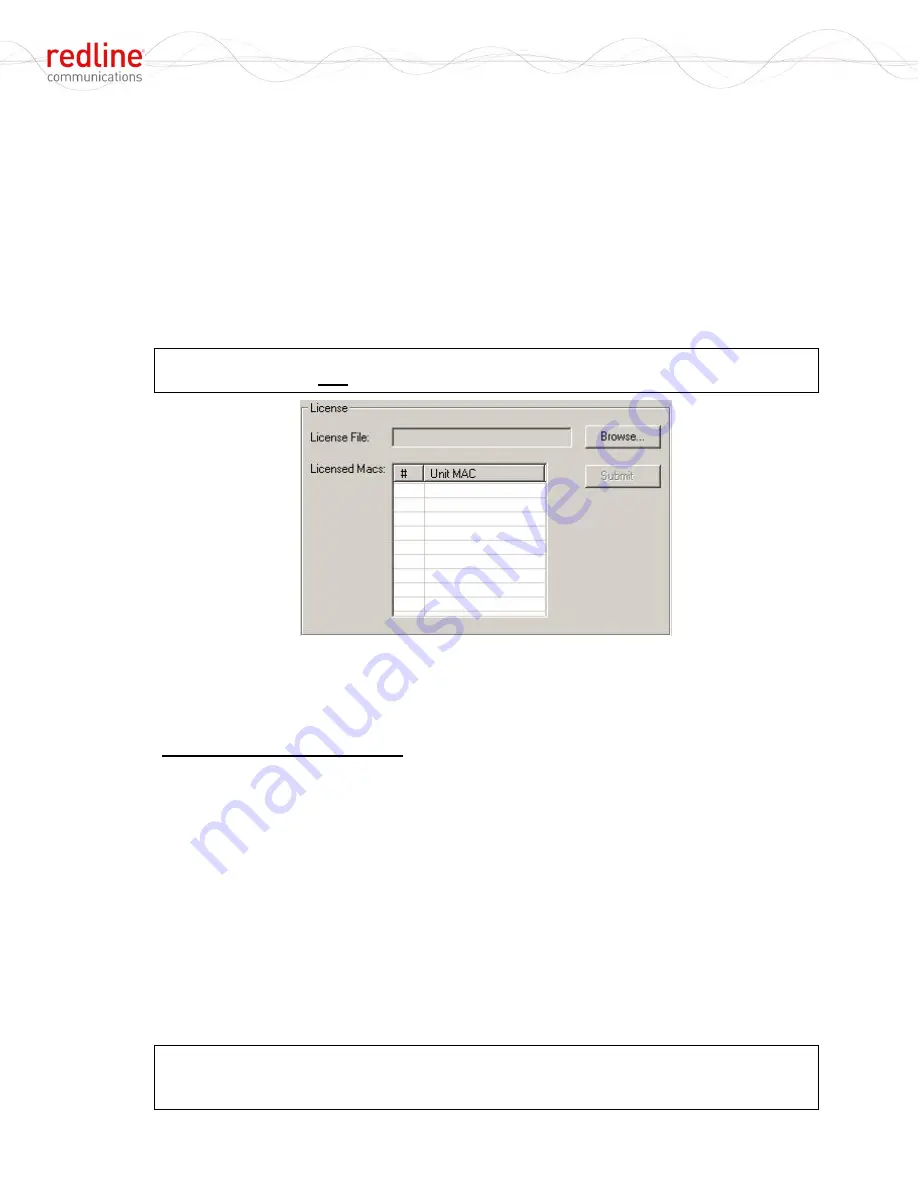
RDL-2000
User Manual
70-00143-01-01a
Proprietary Redline Communications © 2010
Page 34 of 50 September 24, 2010
3.9 License Screen
Use the License screen to register the license for the RDL-2000. The license feature
controls the band settings based on regulatory requirements (e.g., ETSI, FCC, etc). See
the
Band
setting in section 3.5: Advanced Screen on page 24. Without a license file
installed, the default settings are: 10 MHz channel, 5.8 GHz band, and DFS enabled.
Before entering a license file, the RDL-2000 is operating in a restricted mode and allows
operation only in the 5.8 GHz band. License files are created using the MAC address of
a specific RDL-2000 unit, and the license will be accepted only by an RDL-2000 having
this MAC address. This operation requires a system reboot.
Important
: The RDL-2000 must be rebooted at the end of this procedure. This function
should be performed only during installation or a scheduled maintenance window.
Figure 22
:
Link Mgr - License Screen
License File
: Name of the selected license file.
Browse
: Click this button to use the system file browser to locate the file on a PC or
network drive. The operator may also drag & drop the file on this screen.
License File Upload Procedure
Use the following procedure to upload a new license file:
1.
Login to the RDL-2000 and click
License
in the main menu (left side of screen).
a) Drag & drop the file onto this screen, or
b) Click the Browse button to locate the file.
2.
Verify the MAC address displayed in the
Licensed Macs
table matches the MAC
address of the connected RDL-2000. The license file is accepted only by an RDL-
2000 having the matching MAC address.
3.
Click
Submit
to upload and activate the license file.
4.
Reboot the RDL-2000 to activate the new license file.
5.
Close and then re-open the Link Manager application before re-connecting to the
RDL-2000. Confirm the Regulation field (Installation->Advanced screen) indicates
the correct designation (e.g., FCC)
Important
: If the license is updated on a remotely located unit (e.g., over the air), the
wireless connection may be lost and not be re-established (e.g. if the allowed operating
bands are changed).
















































